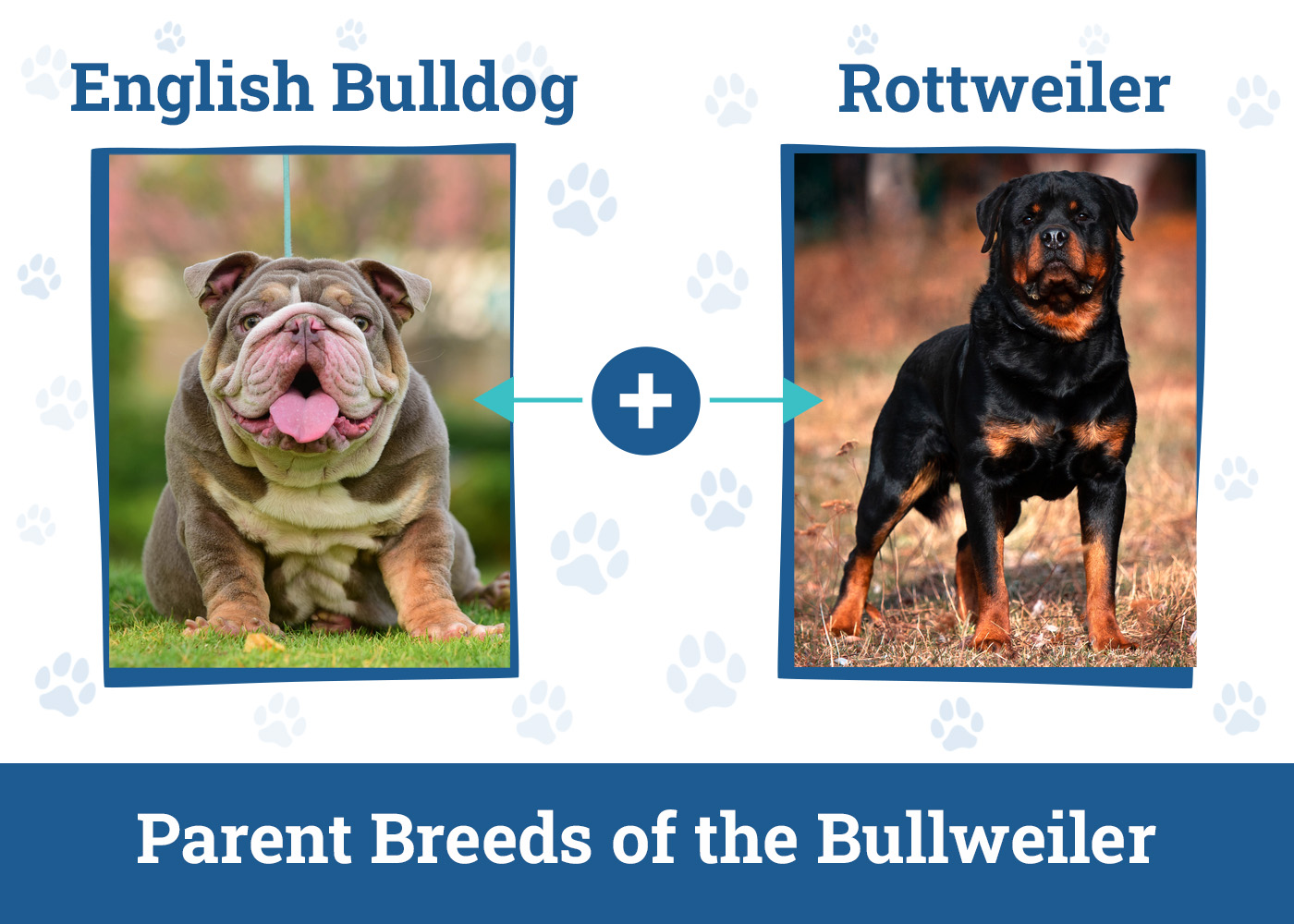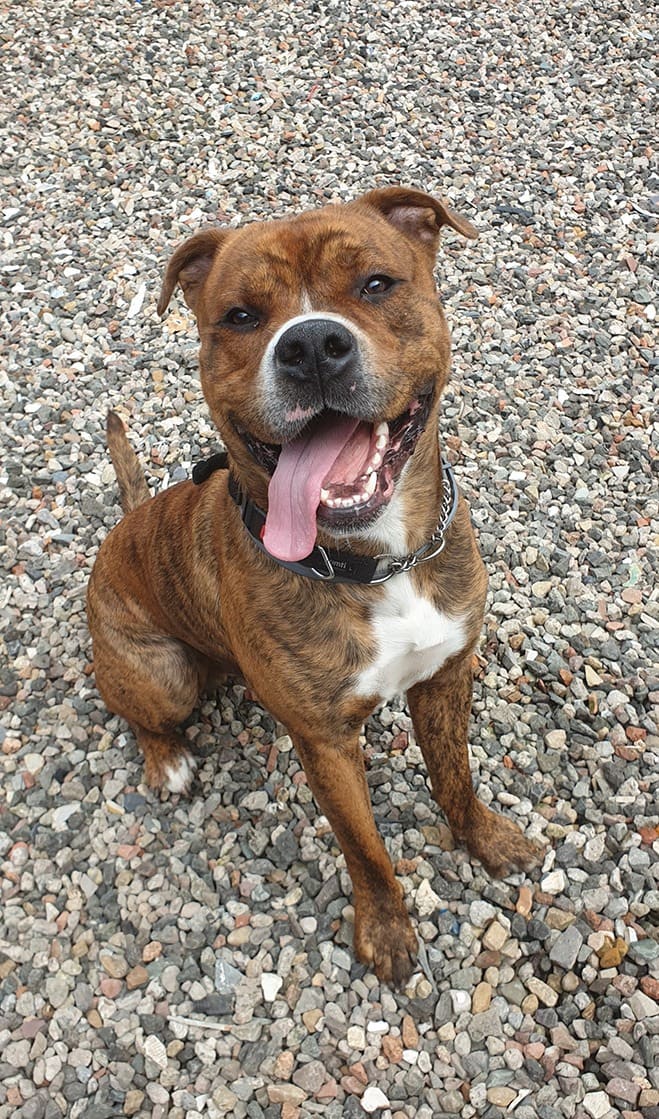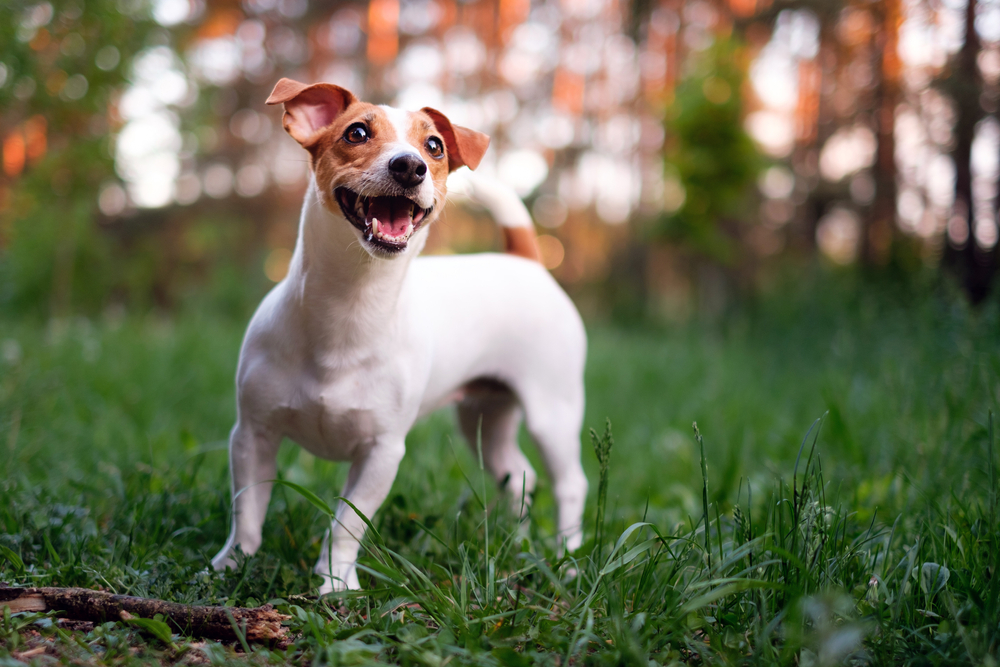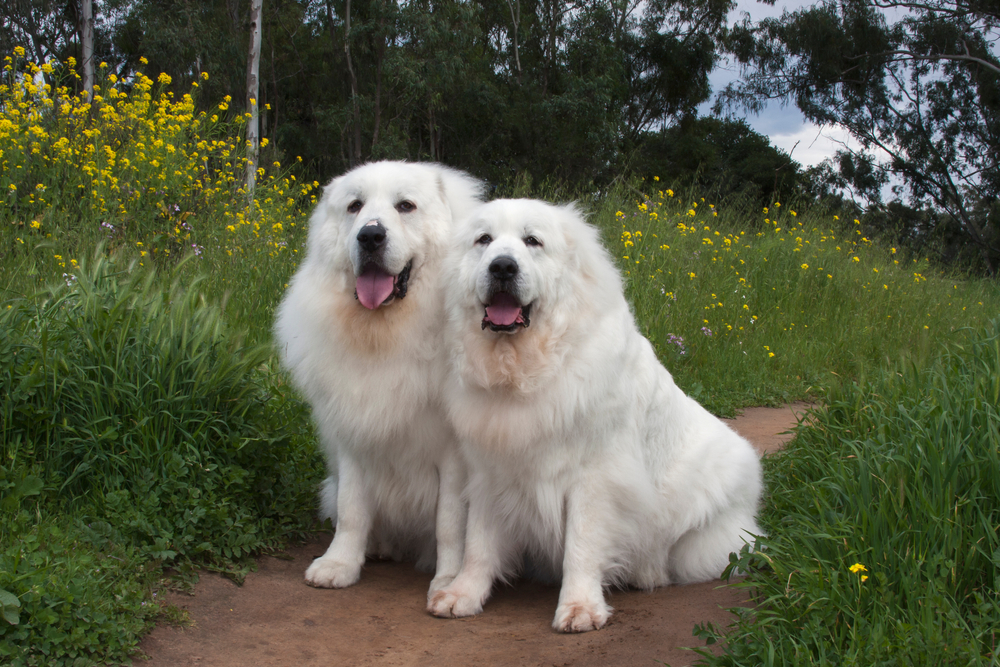Click Below to Skip Ahead
If you stumbled across this unfamiliar breed and fell in love immediately, you might be searching to find out more about these unique dogs. The Bullweiler is stunningly impressive with a strong presence and loyal nature. They are a cross between the German Rottweiler and English Bulldog, carrying traits of both parents.
Breed Overview
Height:
18 – 25 inches
Weight:
70 – 110 pounds
Lifespan:
8 – 12 years
Colors:
Black, brown, tan, red, white
Suitable for:
Watchdog duties, families with kids
Temperament:
Goofy, protective, amiable, watchful
Large and affectionate, the Bullweiler will brighten your life and give you the best snuggles. These goofy pups are super fun playmates, too. So, if you have children to consider, you might want to read more.
Bullweiler Characteristics
Bullweiler Puppies
If you’re searching for a puppy, sound temperament and quality genetics are things you want to look for. These factors ensure you’re getting a healthy canine who can live a long, happy life.
Because this dog is a designer breed, it’s extremely easy for some to obtain parents for breeding. Even if neither parent is registered or guaranteed to be purebred, many try to breed and sell pups for profit.
If the breeder seems suspicious, the puppies have a poor living condition, or the parents seem aggressive—steer clear. These are signals of backyard breeding, which no one should contribute to—even if you feel sorry for the poor, defenseless puppies.
You might get lucky and find an awesome Bullweiler at a local shelter or rescue awaiting their forever home. If you don’t mind skipping the puppy stage, this is a great chance to give a pup a second chance at a happy life. You save a life, save money on vetting, and don’t have to worry about spaying or neutering, which is already taken care of.

Temperament & Intelligence of the Bullweiler 🧠
Bullweilers take a playful, alert approach to life. They don’t mind a nap, but they don’t miss a beat. This combination makes them perfect for couch cuddles and protection all in one.
Bullweilers will drown you with affection. They simply love their humans and show their loyalty and devotion at every turn. These dogs are the type to cower if they think you’re disappointed—judging by a look or a tone from you.
Bullweilers are moderately intelligent and very receptive to emotions. These dogs know when you’re having a bad day and always offer a paw. Their constant need for acceptance makes them attentive in training, so basic commands should transfer without much headache.
Bullweilers might exhibit some territorial tendencies, as both parent breeds might be sensitive to intruders—both human and critter. These traits make for excellent watchdogs, but you might need to exercise caution in certain circumstances.
Are These Dogs Good for Families? 👪
Bullweilers can acclimate well into nearly any lifestyle. These dogs have moderate activity levels, making them average maintenance. A few interactive games and a quick walk will suffice. This makes the breed ideal for people who want a rather low maintenance dog.
They tend to be very amicable and friendly but might be initially suspicious of newcomers. They will assess them first before warming up. Early socialization is a handy tactic to get your pup used to new faces.
These dogs also bond very well with children, being doting and gentle. Since they are so large, they might knock down small kids. These dogs do best with children roughly 6 years of age and older.
Due to their muscular, large physiques, they might not work well for seniors.
Does This Breed Get Along with Other Pets? 🐶😽
Other pets can be a hit and miss when it comes to the Bullweiler. Some might snooze with the family cat or make best friends with the senior dog. Others might be aloof, territorial, or aggressive with other dogs—especially of the same gender. So, early socialization is necessary.
Cats and smaller pets can also be a toss-up. It’s best to supervise any interaction between your dog and other pets. Tiny critters like hamsters and parakeets should stay out of reach at all times. Your dog might mistake the cute fluffy pets for squeaker toys.
Things to Know When Owning a Bullweiler
Food & Diet Requirements 🦴
A Bullweiler needs to eat a high-quality, protein-rich diet that meets all nutritional profiles for canines. You can offer dry kibble, wet food, or a combination but be mindful of portions. These dogs are known to have hefty appetites and have a tendency to gain weight.
Because of their skin folds and poor breeding over the decades, English Bulldogs are prone to skin allergies. If your pooch shows signs of irritation, you might see your veterinarian for guidance. They will likely try food trials for your dog to narrow the triggering ingredient.
Once you have pinpointed the issue, you can eliminate it for good.
Allergies or no allergies, try to steer clear of any food containing corn, wheat, or soy fillers—also, no harmful dyes, chemicals, or preservatives. Whole proteins are always best and should ideally be the first ingredient.
Since the Bullweiler is brachycephalic, you might try tilted or shallow bowls to standard ones for easy eating.
Exercise 🐕
The Bullweiler is a reasonably energetic breed with a brawny build. Both parents approach exercise differently. The Rottie enjoys strenuous exercise and tends to be more active than the Bulldog parent. Bulldogs are a bit lazier and tucker out quicker—mainly because of breathing troubles.
Since your pup might be a little sensitive to prolonged intervals of exercise, try morning and evening walks with light interactive games.
Be mindful of extremely hot temperatures. Both dogs are very sensitive to heat and might have adverse health problems because of it. If it’s a scorcher out, skip the heart rate elevating exercises.
In total, your Bullweiler should have at least 30 minutes of exercise per day.
Training 🎾
Both parent breeds to the Bullweiler are trainable dogs and pick up well on basic concepts. This breed is not an agility dog that can navigate obstacle courses and climb trees. This dog prefers a much more relaxed approach to training.
This breed is incredibly food motivated, so let that work in your favor. Because they are so hyper-focused on you, you shouldn’t have trouble keeping their attention. However, boys especially can be stubborn. So, you might have to learn bribery to get them to behave.

Grooming ✂️
Bullweilers require something a little different in terms of grooming. Because they develop deep wrinkles, the bacterial buildup can collect in their folds, causing irritation or infection. It’s helpful to keep these areas clean, wiping the area with a moist cloth every two days.
In addition to skin fold cleaning, your dog will need a bath roughly every 6 weeks. You can follow up bath time with nail clipping, ear cleaning, and teeth brushing.
Coat length and texture might differ a bit, depending on the stronger parent. But a daily brushing should help to keep their fur debris-free and lustrous.
Health and Conditions 🏥
Unfortunately, due to the poor breeding that the Bulldog had to endure, you run the risk of quite a few health problems—and that’s only on one side. Rottweilers have their share of problems, too—like a strong inclination to various cancers.
Because of the likelihood of health issues, annual vet visits are paramount in their entire adult lives. Early detection or prevention can be lifesavers in certain circumstances.
- Allergies—these dogs can suffer from dietary and environmental allergies.
- Reverse Sneezing—this condition causes dogs to have fits where they suck air inward rather than sneezing outward.
- Cherry Eye—this condition is a prolapse of eyelid glands.
- Brachycephalic Airway Syndrome—this condition causes airway abnormalities that make breathing difficult and can be life-threatening in certain circumstances.
- Cancer—both parent breeds are prone to various canine cancers.
- Hip and Elbow Dysplasia—these conditions cause deterioration of the joints, leading to bone rubbing.
To combat any issues, make sure you take your dog to the vet for annual checkups to get ahead of problems. Don’t hesitate to take your dog to the vet if they show abnormal symptoms.
Male vs Female
Every single dog, regardless of gender, is lovely and unique. But certain traits lean toward one or the other. So, if you’re trying to decide which gender is best, consider a few things.
Physically speaking, males are generally larger and broader than females. However, because this hybrid breed has a varying size proportion between parents, this might not always be the case.
Boys tend to be more goofy, lovable, and slower to mature. They might also be likelier to exhibit dog aggression, especially in same-sex pairs. Dominance is a huge issue with most males, and you will have to proceed with caution.
Females tend to be gentle protectors with a more subtle approach. They might also be likelier to bond intensely to one person over all others. The ladies might be a little more reserved around strangers than their male counterparts. They, too, might exhibit same-sex dog aggression.
3 Little-Known Facts About the Bullweiler
1. Both Parents of the Bullweiler Are Brachycephalic Breeds
Brachycephalic dogs are all too familiar—short shouted pooches with adorable wrinkles. But with their special skull shape comes unique problems. Since both parent breeds carry this trait, your pooch might encounter breathing problems like brachycephalic airway syndrome.
2. Both Parent Breeds Originated in Europe
As both titles imply, the German Rottweiler hails from Germany while the English Bulldog comes from England.
3. No One Knows the Exact Origin of the Bullweiler
No one knows just when this breed surfaced, but speculators think it might have been in the 1980s. During this period, many breed cross experimentation started, giving us many designer dogs we know and love today.
Conclusion
If the Bullweiler breed has your full attention, it might be time to start your puppy search. This is such an exciting time for you and your family, bringing home a brand new addition. Just make sure that your puppy is healthy, and that the breeder you select has a long history of successful litters.
Because this is technically a mixed breed, you may very well find this combination in a shelter or rescue. Don’t be afraid to look around so you can find your perfect match—best of luck on your puppy search.
Featured Image Credit: AS AT, Shutterstock












